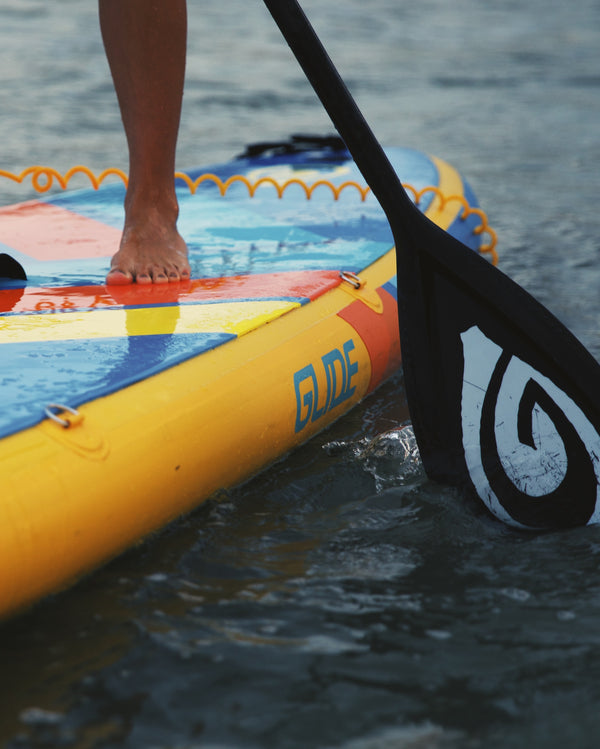
How Hard is it to Learn to Stand Up Paddleboard?
Learning to stand-up paddleboard (SUP) can seem daunting, especially if you're like Sam Tyler — a big guy with initial concerns about balance and the prospect of spending more time in the water than on the board. However, Sam’s journey from a nervous beginner to a proficient paddleboarder is not just inspiring but filled with practical advice for anyone looking to venture into the world of SUP.
Key Highlights
- Patience is Essential: Allow yourself time to get comfortable on your paddle board; the learning curve is part of the journey.
- Correct Paddle Orientation: Learn why the paddle's angled blade should face away from you for efficient movement.
- Mastering the Stand Up: Step-by-step guidance to transition from kneeling to standing securely on your board.
- Balance with Your Paddle: Use your paddle as a third point of contact with the water for better stability.
- Optimal Foot Placement: Discover the best stance for balance and ease of movement on your SUP.
- SUP Accessibility: Inspiring stories of beginners, like Sam Tyler, who overcame their fears to enjoy paddle boarding.
- Versatile SUP Adventures: Tips for enjoying paddle boarding in different environments, from tranquil lakes to coastal waves.
- Inflatable SUP Technology: Insight into how inflatable paddle boards have revolutionized the sport.
The Learning Curve: Patience is Key
Sam's experience underscores the importance of giving yourself time to acclimate. It might take an hour (or more) to start feeling comfortable on your board, but persistence pays off. Remember, every minute spent practicing gets you closer to that effortless glide across the water.

Paddle Orientation: The First Step to Efficiency
A common stumbling block for beginners is the paddle's angled blade, which should face away from you during a stroke. This orientation might feel odd at first but it ensures a more powerful and efficient push through the water, helping propel you forward with each stroke.
Standing Up: Overcoming the Initial Hurdle
Getting to your feet is a pivotal moment in any paddleboarder’s journey. Sam’s method involves transitioning from knees to a squatting position beside the board's handle, then rising to a full stand while using the paddle for support. This technique provides stability as you find your balance.
Balancing Act: The Role of the Paddle
An unexpected yet effective tip for maintaining balance is to keep the paddle submerged in the water, using it as a third point of contact. This not only aids in stability but also ensures you’re ready to move, which is crucial for keeping your balance.
Foot Placement: Foundation for Stability
For optimum stability, your feet should be parallel, shoulder-width apart, bracketing the board's handle. This stance, with knees slightly bent, offers the best combination of balance and readiness to paddle. As you gain confidence, experimenting with foot positioning can further enhance your SUP experience.

Conclusion: SUP is for Everyone
Sam Tyler's transition from apprehension to confidence on a SUP is a testament to the sport's accessibility and joy. With patience, practice, and adherence to these foundational tips, anyone can discover the pleasure of paddleboarding. Whether you’re navigating tranquil lakes or coastal waves, SUP offers a unique blend of exercise, relaxation, and connection with nature.
Ready to embark on your own SUP adventure? Remember Sam’s advice and embrace each step of the journey. For more tips, stories, and inspiration from the world of paddleboarding, stay tuned to our blog.
For other frequently asked questions and tutorials, check out our website!
Related Topics
Improving Fitness on Paddle Board
How Inflatable Paddle Board Technology Changed The SUP Industry
Your Comprehensive Guide to Inflatable Stand Up Paddle Boards


